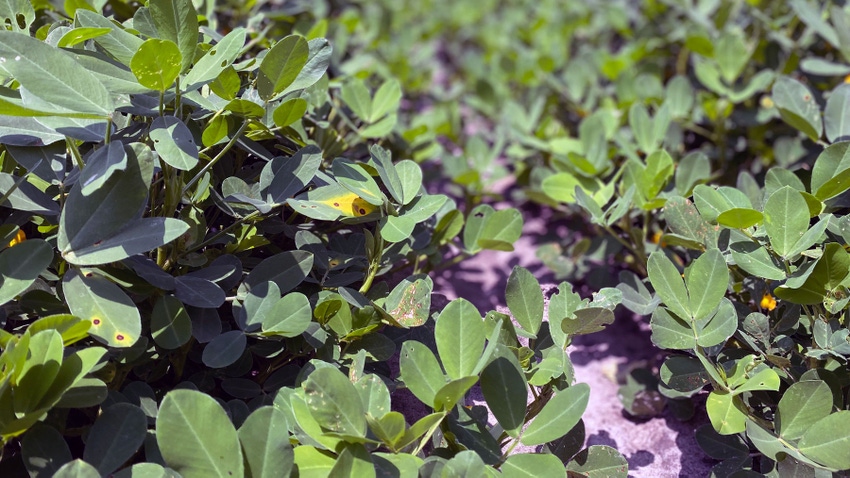
At a Glance
- 2022 weather and spread of tomato spotted wilt caused issues with crop quality and vigor.
- More than 15 percent of this year's planting was put off until June due to flooding.
Georgia peanut specialist Scott Monfort recently gave Southeast Farm Press an update on the Georgia peanut crop. Weather delays frustrated the crop, and disease pressure builds now, but he offered a mid-season yield prediction.
“We have a good crop on our hands at this point,” said the University of Georgia Extension agronomist on July 20.
The crop’s trip to that good point wasn’t smooth. The usual suspect was to blame: Weather.
“We had some seed quality problems and issues with vigor, which was caused by weather issues last year. Then Mother Nature threw us a curveball. Instead of warming up in May, it cooled off. We got a lot of rain and that caused a lot of problems trying to get that first part of the crop planted. We usually plant about 30% of the crop from April into about May 10th. This year, it was about 10% or less,” he said.
The weather pushed the bulk of planting back about two weeks, he said. More than 15% of the crop was planted in June, which isn’t regular. Some replanting due to stand issues with flooding was still taking place well into June. Georgia’s peanut regions received a lot of rain the first of June, ranging from six to as much 12 inches or more in just two weeks.
“Seed planted first came out of the ground slowly. Instead of six days, in some cases 14 or 21 days to come up. What was planted later seemed to come off quicker. We're still dealing with some seed issues, but we got the crop up. I think overall after replanting, we may not be on the typical track, but we are on a track,” he said. “But we have some very late peanuts.”
And then there’s the tomato spotted wilt virus, Georgia peanut’s top disease. The virus was widespread and bad last year.
“Prior to two years ago we weren’t talking about spotted wilt as much, but in the last two years, this thing has come with a vengeance. We thought coming through the cool weather, maybe the virus wouldn't be that bad. We're wrong. I rated some of our trials the other day, and we’re anywhere from 8% to 35% spotted wilt. So just as bad in some situations as what we saw last year,” he said.
He said the uncooperative weather “might have changed the pattern of the thrips and everything else. At this point, we have a high risk for virus again this year.”
As mid-summer heated up with more-familiar weather patterns, Monfort gave a mid-season yield prediction. (He was prompted by this reporter.) He wagered a 4,200-pound per acre average but added there’s still plenty of track left to cover in the race before the finish line.
According to the June 30 USDA acreage report, Georgia farmers planted an estimated 760,000 acres of peanuts this year, about 11% more than last year.
Read more about:
Digging PeanutsAbout the Author(s)
You May Also Like






